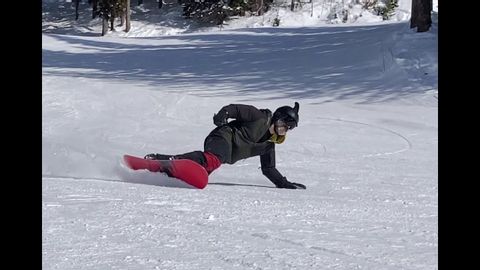單板滑雪雕刻的祕密: 第 1 部分 - 九大要素 (The Secrets of Snowboard Carving: Part 1 - The Nine Elements)
niniba 發佈於 2024 年 10 月 25 日  沒有此條件下的單字
沒有此條件下的單字US /ɪnˈtɛns/
・
UK /ɪn'tens/
US /ˈbesɪkəli,-kli/
・
UK /ˈbeɪsɪkli/
US /ɪˈmidiɪtli/
・
UK /ɪˈmi:diətli/
US /pəˈzɪʃən/
・
UK /pəˈzɪʃn/
- n. (c./u.)態度,觀點;位置;(團隊運動中個人所處的)位置;職位;處境;優勢
- v.t.定位;放置
